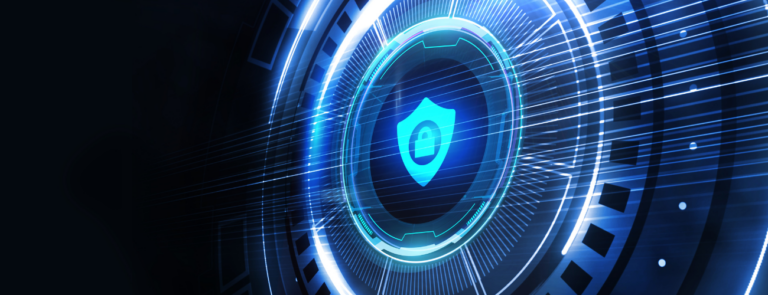
IBM recently announced that IBM i 7.2 will reach end of program support (end of life) on April 30, 2021. That’s roughly a year and a half from now. If you’re still running IBM i 7.2, the clock is running on maintaining IBM and third-party vendor support. Here’s what you need to understand as i 7.2 reaches end of life.
The IBM i 7.2 timeline
As shown in Figure 1, IBM i 7.2 was announced on April 28. 2014. The new OS became generally available on May 2, 2014.
IBM announced end of marketing support and end of program support for IBM i 7.2 on September 9, 2019.
IBM i will reach end of marketing support on April 20, 2020, when you will no longer be able to purchase IBM i 7.2 or its associated products.
On April 30, 2021, IBM i 7.2 will reach end of program support (end of life). IBM will stop issuing 7.2 Technology Releases (TRs) and PTFs after that date, and i 7.2 users will no longer be able to get technical support.
Understand however that your IBM i 7.2 systems won’t suddenly self-destruct and stop running after April 30, 2021. You’ll still be able to run your 7.2 systems the same as you do today. But if you encounter operating system problems after that date, you will no longer be able to get support under normal IBM i Software Maintenance (SWMA).

Figure 1: IBM i 7.2 timeline: From announcement to end of life
What options are available for i 7.2 shops?
If you’re running IBM i 7.2 on IBM Power hardware, you have two options as i 7.2 reaches end of life.
- Continue running your IBM i 7.2 systems without IBM and third-party vendor support
- Upgrade to IBM i 7.3 or i 7.4, which will maintain support for several years to come
Here’s what to consider as you decide which path to take for out of support IBM i 7.2 systems.
First, survey your applications for i 7.3\ i 7.4 compatibility
It’s not just your IBM i 7.2 system that you need to worry about. It’s also your home grown and third-party application programs. Before you make any decisions, survey all your vendors to see if their products are certified to run on IBM i 7.3 or 7.4, and when their product’s support for i 7.2 runs out. Including all IBM i 7.2 licensed products that are running under your operating system.
Some third-party products will pull support for running their products on i 7.2, when IBM stops supporting 7.2. Other third-party products may need upgrading or replacement before running on newer operating systems. Some products may not yet have been tested or supported on later IBM i versions. And some third-party software will not be compatible after updating your i 7.2 system and the product will be discontinued. Look for any application that won’t run on or that needs modification to run on i 7.3/ i 7.4.
You may also discover that some of your applications (including your homegrown apps) are dependent on i 7.2 licensed products that will not be supported on i 7.3 or 7.4. For example, a software package may rely on a Java version that is no longer available on 7.3 or 7.4, in which case you will have to modify and test with the latest version to maintain compatibility.
Just as you need an upgrade plan for an i 7.2 OS upgrade, you also need an upgrade plan for your application and vendor supported products. It’s important to know where all your applications stand before you decide whether to upgrade your i 7.2 operating system.
If you’re wondering where SEA products stand on IBM i OS upgrades, SEA has always supported our iSecurity software suite and all our other products running on any i operating system. But beware. Other vendors may not feel the same.
Option #1: Staying on i 7.2 after it loses support
In some cases, staying on IBM i 7.2 may be your best option. If your core software is being replaced or migrating off IBM i in the next 18 months, it may not be worth it to upgrade your operating system if you’re going to switch apps or platforms. Conversely, you may find that one of your packages just won’t run on later IBM i OS versions and you have to stay on i 7.2 until a replacement is found.
After end of life, IBM will stop offering the same new functionality, fixes, enhancements, and security patches to i 7.2 customers that it will be offering to i 7.3 and 7.4 customers. Staying on i 7.2 past end of life can result in your system being less stable and less secure, after IBM stops issuing 7.2 TRs and PTFs.
If IBM history repeats itself, you may be able to purchase a Service Extension for IBM i 7.2 product, which will provide limited support for i 7.2 and its associated products (without product enhancements) for a few years after support ends in April 2021. IBM is currently offering service extension packages for the i 6.1 and i 7.1 operating systems, which have both reached end of life. It’s not possible today to know whether an IBM i 7.2 Service Extension offering will be available, but it’s a good bet i 7.2 service extension will be available in 2021. Make sure you have enough in your 2021 software maintenance budget if you go this route. Past Service Extension contracts have cost customers at least 50 percent more than they paid for normal Software Maintenance (SWMA).
If you’re running i 7.2 on POWER7 hardware, you’re taking a double hit. IBM officially discontinued its maintenance agreements for IBM POWER7 hardware on September 30, 2019. Big Blue no longer offers service on POWER7 hardware. POWER7 shops with i 7.2 systems are already running on unsupported hardware until April 30, 2021. After April 30, 2021, they’ll be running on unsupported hardware AND unsupported software.
While i 7.2 will run indefinitely on existing hardware, you’ll run several risks in terms of upgrades, security fixes, and software and hardware support, if you continue to run 7.2 after end of life.
Option #2: Upgrade to i 7.3 or 7.4
Your other option is to upgrade your IBM i 7.2 system to i 7.3 or i 7.4.
Upgrading to i 7.3 may be easier than upgrading to i 7.4. i 7.3 has been available since April 15, 2016 so there have already been several TRs and PTFs to fix most common issues. i 7.4 has only been available since June 21, 2019. There have been fewer 7.4 TRs and PTFs released and the OS is just a little past general availability. More fixes are probably in the works.
This is where your software survey on which third-party vendor and IBM licensed products run on i 7.3 and 7.4 comes in handy. If you move up to a more recent system, you’ll undoubtedly need to upgrade or replace some software. For example, WebSphere Application Server 8.0, Db2 Web Query for i, and several versions of Java that were available on i 7.2 are not available in later versions. You’ll need to analyze your current software stack and determine which apps and license programs need to be upgraded before an operating system upgrade can occur. Upgrading application software may also affect your budget, as vendors frequently charge a premium for newer versions. Make sure you have enough budget money to cover any software upgrade fees.
Hardware considerations will also play into your upgrade decision. If you’re running POWER7 hardware, you may also want to upgrade to POWER8 or POWER9 hardware along with your OS upgrade. POWER7 is end of life and no longer supported. i 7.3 and 7.4 both run on POWER8 and POWER9 hardware. i 7.4 is not supported on POWER7 hardware. These considerations may not affect you if you’re running IBM i 7.2 in the cloud, where your cloud vendor handles all hardware upgrades.
Be sure to check out our primer on Software and Hardware Planning for IBM i 7.4 to get more information on the IBM i 7.2-to i 7.4 upgrade process.
The best path
There are risks both in staying put running i 7.2 and in upgrading to IBM i 7.2 or 7.3. However, unless you have a compelling reason to stay on i 7.2, it’s best to upgrade to i 7.3 or i 7.4 to maintain support and to get the latest fixes and security patches. IBM makes end of life announcements years in advance, in order to give you time to plan what to do. Use that time to make a wise decision on how you’ll handle your end of life scenario.




